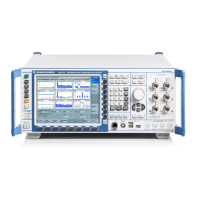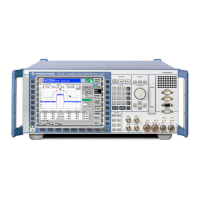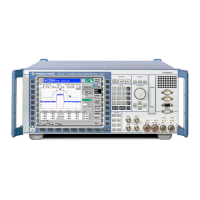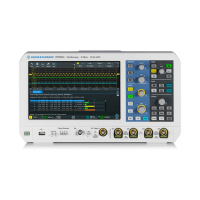Remote Control
R&S
®
CMW500
176User Manual 1173.9463.02 ─ 06
●
...:XCONdition, ...:XEVent
●
...:XWCondition, ...:XWEVent
More sophisticated evaluations of the hierarchy are possible using e.g.:
●
STATus:CONDition:BITS:ALL?
●
STATus:EVENt:BITS:ALL?
●
STATus:MEASurement:CONDition:RDY? etc.
For command descriptions refer to:
● chapter 6.3.13.2, "STATus:OPERation (Elementary Commands)", on page 256
● chapter 6.3.13.3, "STATus:OPERation (Extended Commands)", on page 264
● chapter 6.3.13.4, "STATus:OPERation (Overall Evaluation)", on page 271
5.6.3.5 STATus:QUEStionable
The STATus:QUEStionable register indicates whether the data currently being acquired
is of questionable quality.
The R&S CMW500 does not use the STATus:QUEStionable register.
5.6.4 Application of the Status Reporting System
The purpose of the status reporting system is to monitor the status of one or several
devices in a measuring system. To do this and react appropriately, the controller must
receive and evaluate the information of all devices. The following standard methods
described in the following sections are used:
●
Service request (SRQ) initiated by the measuring device
●
Serial poll of all devices in the bus system, initiated by the controller in order to find
out who sent a SRQ and why
●
Parallel poll of all devices
●
Query of a specific instrument status by means of commands
●
Query of the error queue
5.6.4.1 Service Request
The measuring device can send a service request (SRQ) to the controller. Usually this
service request causes an interrupt, to which the control program can react appropriately.
It is also possible to wait until an SRQ is generated, see *SRQ? in chapter 6.1, "Common
Commands", on page 194).
Initiating an SRQ
As shown in section Overview of Status Registers, an SRQ is initiated if one or several
of bits 2, 3, 4, 5 or 7 of the status byte are set and enabled in the SRE. Each of these bits
summarizes the information of a further register, the error queue or the output buffer.
Status Reporting System
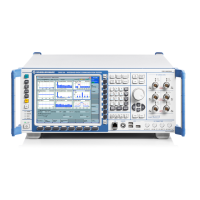
